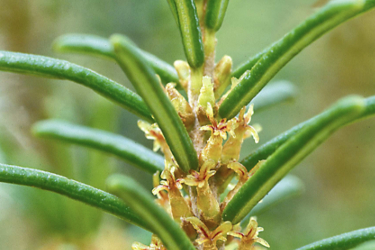Sandhill rosemary
Ceratiola ericoides
Sandhill rosemary, Ceratiola ericoides, is a threatened aromatic perennial evergreen-shrub that grows throughout the southeast in open patches of bare sand. Having no botanical relation to culinary rosemary, Sandhill rosemary gets its name for having a similar smell to rosemary. During warmer weather its smell changes to that of honey, however this plant is never edible to humans.
Sandhill rosemary seed only germinates after the parent plant, which releases a chemical into the soil to prevent seed germination, dies. These badland shrubs are responsible for feeding bears, harvester ants, mice, and even the federally threatened Florida scrub-jay. The Sandhills are also home to Georgia’s state reptile, the gopher tortoise Gopherus polyphemus.
Many Sandhill rosemary habitats off coastal plain rivers are threatened as the land is turned into pine plantations and pastures. It is found scarcely in 11 counties in Georgia and throughout the southeast.
Of the 20 populations across Bryan, Candler, Charlton, Emanuel, Glynn, Richmond, Tattnall, Toombs, Wayne and Wheeler county of Sandhill rosemary, most are located on private land and have no legal protection. You can help with the conservation efforts of the State Botanical Garden of Georgia by supporting our imperiled native plant initiatives to help increase numbers and chance of survival of these important plants.

